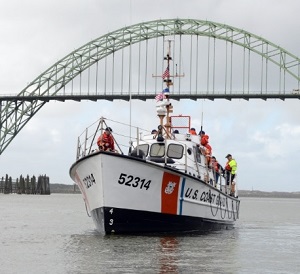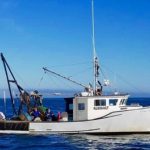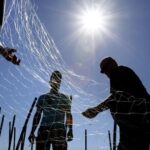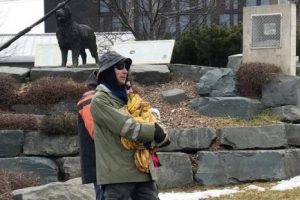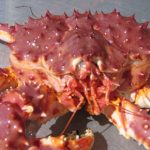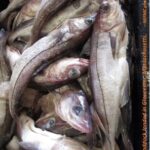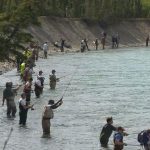Tag Archives: Pacific Northwest
In the Pacific Northwest, killing sea lions is a necessity
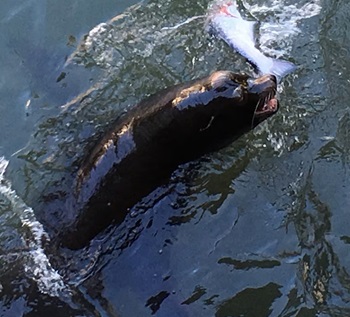 Don’t let their adorable faces and playful personalities fool you: California and Steller sea lions are capable of having disastrous impacts on nonnative ecosystems. In places like the Columbia River Gorge, these so-called dogs of the sea have been encroaching on native fish habitats for decades. Making homes in the Pacific, in coastal areas like the beaches of California, Alaska and Japan, these sea lions especially thrive on the West Coast, where population numbers are estimated to have grown from 75,000 to 257,000 in the last 30 years. This population boom has meant increased nutritional needs, sending thousands of sea lions inland in search of prey. One of the easiest targets for sea lions is the Columbia River, one of North America’s largest rivers and a key migration route for North American fish. The picturesque river valley abounds with seafood, including 13 federally protected species. more, >>CLICK TO READ<< 10:12
Don’t let their adorable faces and playful personalities fool you: California and Steller sea lions are capable of having disastrous impacts on nonnative ecosystems. In places like the Columbia River Gorge, these so-called dogs of the sea have been encroaching on native fish habitats for decades. Making homes in the Pacific, in coastal areas like the beaches of California, Alaska and Japan, these sea lions especially thrive on the West Coast, where population numbers are estimated to have grown from 75,000 to 257,000 in the last 30 years. This population boom has meant increased nutritional needs, sending thousands of sea lions inland in search of prey. One of the easiest targets for sea lions is the Columbia River, one of North America’s largest rivers and a key migration route for North American fish. The picturesque river valley abounds with seafood, including 13 federally protected species. more, >>CLICK TO READ<< 10:12
Federal judge to rule on reduction in trawler halibut bycatch
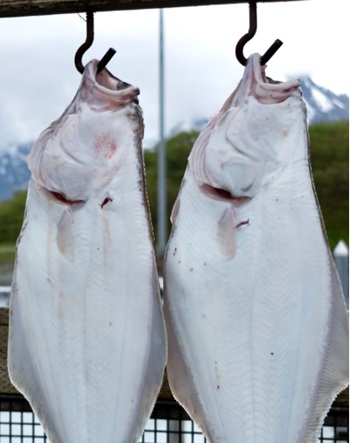 A U.S. District court judge is expected to issue a decision this spring on a lawsuit filed by the Groundfish Forum challenging a National Marine Fisheries Service (NMFS) decision setting abundance-based limits on halibut bycatch in the Amendment 80 Bering Sea trawl fishery. The Groundfish Forum, based in Seattle, filed its complaint with the U.S. District Court in Anchorage on Dec. 19, challenging the new halibut bycatch rules that were first adopted by the North Pacific Fishery Management Council and subsequently approved by NMFS. On Feb. 29, the Halibut Defense Alliance intervened on the side of NMFS over concerns about the number of halibut taken as bycatch by Amendment 80 vessels in the Bering Sea, saying the limits on halibut bycatch would ensure more equitable access to halibut fisheries. The alliance is a broad coalition of commercial harvesters, charter operators, processors and community organizations representing halibut-dependent communities in Alaska and the Pacific Northwest. more, >>click to read<< 19:52
A U.S. District court judge is expected to issue a decision this spring on a lawsuit filed by the Groundfish Forum challenging a National Marine Fisheries Service (NMFS) decision setting abundance-based limits on halibut bycatch in the Amendment 80 Bering Sea trawl fishery. The Groundfish Forum, based in Seattle, filed its complaint with the U.S. District Court in Anchorage on Dec. 19, challenging the new halibut bycatch rules that were first adopted by the North Pacific Fishery Management Council and subsequently approved by NMFS. On Feb. 29, the Halibut Defense Alliance intervened on the side of NMFS over concerns about the number of halibut taken as bycatch by Amendment 80 vessels in the Bering Sea, saying the limits on halibut bycatch would ensure more equitable access to halibut fisheries. The alliance is a broad coalition of commercial harvesters, charter operators, processors and community organizations representing halibut-dependent communities in Alaska and the Pacific Northwest. more, >>click to read<< 19:52
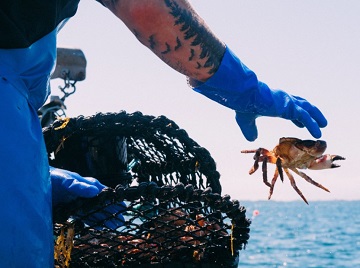
Pacific Seafood Controls the Dungeness Crab Market, but Small Fishermen Are Fighting Back
After a blockbuster 2022 crabbing season that saw an on-time, December 1 start date and record prices for fishermen, this year’s crab season didn’t kick off until mid-January after three regulatory delays. When the season did begin, crabbers were offered as little as $2 per pound for their catch, a price that left many struggling to pay staff and buy fuel and bait. Those conditions have squeezed the small businesses that make up the West Coast crabbing industry and act as the backbone for small towns up and down the shoreline. But this year appears to have brought boom times for one company in particular—Pacific Seafood. >click to read< 07:40
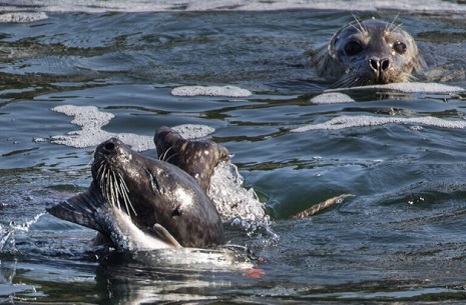
Battle over endangered fish has led Oregon to cull sea lions
While sea lion populations in the Pacific Northwest have soared in recent decades, salmon and steelhead numbers have not. And sea lions’ voracious appetite for salmon is the issue at hand. Many of the fish that sea lions eat are among 13 threatened and endangered runs protected under the federal Endangered Species Act. And groups of sea lions have taken to simply waiting at the Bonneville Dam, Willamette Falls and other pinch points where the fish gather as they struggle to make their way upriver to spawn. The Oregon Department of Fish & Wildlife estimates that sea lions eat up to 44% of the Columbia River spring Chinook run and 25% of the Willamette winter steelhead run each year. Video, >click to read< 09:11
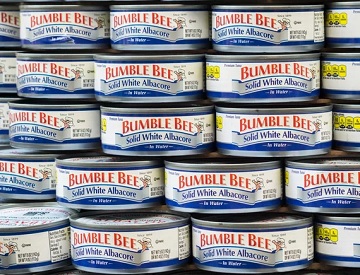
The Untold Truth Of Bumble Bee Tuna
If you’re curious about the history of this thoroughly American product, grab your life vests and Dramamine pills, and set sail with us to discover the untold truth of Bumble Bee Tuna. Have you ever considered the origins of a seemingly always-available product, like Bumble Bee Tuna? Well, if you’ve ever wondered about this tuna industry giant’s history, you may be surprised to learn that when a group of commercial fishing companies joined forces to form the original company, it wasn’t under the name Bumble Bee Tuna, it was known as the Columbia River Packers Association. Founded in Astoria, Oregon in 1899, where its headquarters remained for the next 81 years, the CRPA was a collective formed by A.B. Hammond, who hoped this conglomeration of seven commercial fishing companies would boost the group’s business prowess. >click to read< 13:19
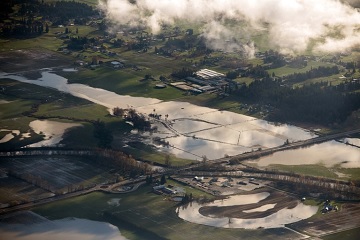
Recently released salmon eggs likely bore the brunt of record breaking rains in the Pacific Northwest.
Standing outside his house in Blanchard, Washington, water up to his thighs, Kevin Morse watched in awe as a few salmon, usually found in a nearby creek, swam across his driveway. Morse is just one of thousands of people across western Washington and British Columbia who experienced severe flooding in mid-November.,, As communities turn to cleanup efforts and brace themselves for yet more rain, experts say that the flooding could have both positive and negative ecological impacts on salmon. >click to read< 22:01
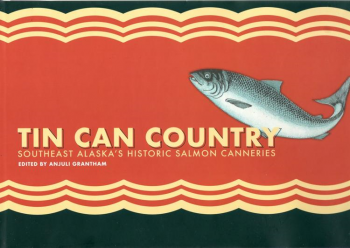
‘Tin Can Country’ stretches from Alaska to the Pacific Northwest
In much the same way that it’s a good idea to assume anyone you talk to here may be related to nearly anyone else you might mention, it’s also fairly safe to assume they have some connection with Alaska. A desirable new book, “Tin Can Country: Southeast Alaska’s Historic Salmon Canneries,” drives home the strong bonds between the great state of the north and the Pacific Northwest. Edited by Anjuli Grantham with individual chapters by top historians and experts including my friend, the legendary Karen Hofstad, “Tin Can Country” chronicles the golden age between 1878 and 1949. >click to read< 14:28
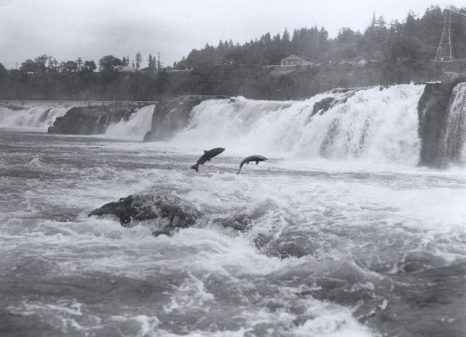
Salmon in the history of the Pacific Northwest
Lewis and Clark’s interpreter and guide Sacagawea was a “Salmon Eater.” That’s what they called her tribe of Lemhi Shoshone Native Americans, a nomadic band who lived in Idaho’s Lemhi River Valley and along the upper Salmon River — their descendants today living mostly on the Fort Hall Indian Reservation near Pocatello. Sacagawea’s tribe was made up of the Agaidikas or Salmon-Eater Shoshone and the Tukidikas. Sacagawea belonged to the Agaidikas. Food was almost always a big challenge for Lewis and Clark’s Corps of Discovery expedition. click here to read the story 19:43
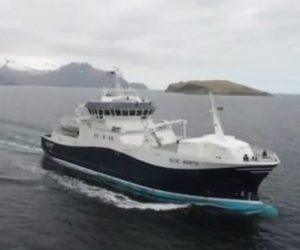
$1.4 billion fishing industry stays afloat amid regulations, tragedies
It’s been two months since the missing crab vessel Destination was found on the ocean floor of the Bering Sea. The Seattle-based crew went missing in February. All six people on board died when the crab boat went down in “Deadliest Catch” waters. You can see the memorial that still stands at Fisherman’s Terminal in Seattle’s Ballard neighborhood. It’s a grim reminder that Alaskan fishing is still coined the most dangerous job in the world, but the commercial fishing industry also has helped form the blueprint of the Pacific Northwest. Latest numbers from the state show it brings in $1.4 billion a year to our state. Today, it employs more than 14,000 people. Today, the $35 million, 191-foot freezer liner Blue North glides across the Bering Sea, catching cod in a moon pool. Video, click here to read the story 09:02
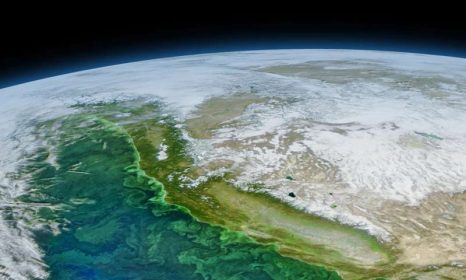
El Nino, Pacific Decadal Oscillation implicated in domoic acid shellfish toxicity
Using a combination of time-series data spanning two decades, the scientists not only showed a clear link between domoic acid and these larger climatic phenomena, but also developed a new model to predict with some accuracy the timing of domoic acid risks in the Pacific Northwest. The model is based on interpreting the status of the “Oceanic Niño Index” and the Pacific Decadal Oscillation – both of which are measures of climate, ocean water movement, currents and temperature. It’s designed to help coastal resource managers more effectively monitor this issue and protect public health. The findings were made by researchers from Oregon State University, the University of Oregon, the National Oceanic and Atmospheric Association (NOAA), and the Oregon Department of Fish and Wildlife. The work was primarily supported by NOAA. Read the article here 08:01
Despite delay, Dungeness maintain strong economic grip
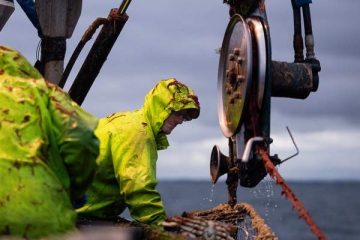 While some commercial crab fishermen are still trickling into ports in Oregon and Washington, the majority of commercial crabbing has slowed for the season as attention turns toward other fisheries. Those remaining are primarily doing so for the live crab market, which fetches top dollar. Oregon and Washington landings, The latest total for Oregon is 13.8 million pounds, according to the Oregon Department of Fish and Wildlife (ODFW) — a dramatic increase from the 8.2 million caught in 2014-15. The Port of Astoria has recorded 4.4 million pounds. Oregon landed 9.7 million pounds in January alone. In February 2.7 million pounds were recorded. The catch slowed to 700,000 in March and 440,0000 in April, respectively. Washington’s January catch also eclipsed the total for the 2014-15 season. Read the rest here 08:59
While some commercial crab fishermen are still trickling into ports in Oregon and Washington, the majority of commercial crabbing has slowed for the season as attention turns toward other fisheries. Those remaining are primarily doing so for the live crab market, which fetches top dollar. Oregon and Washington landings, The latest total for Oregon is 13.8 million pounds, according to the Oregon Department of Fish and Wildlife (ODFW) — a dramatic increase from the 8.2 million caught in 2014-15. The Port of Astoria has recorded 4.4 million pounds. Oregon landed 9.7 million pounds in January alone. In February 2.7 million pounds were recorded. The catch slowed to 700,000 in March and 440,0000 in April, respectively. Washington’s January catch also eclipsed the total for the 2014-15 season. Read the rest here 08:59
Hurricane-force winds out of the Gulf of Alaska sent huge waves traveling down the West Coast
 Like a gigantic pinwheel, an intense 965-millibar storm with hurricane-force winds in the Gulf of Alaska last week moved into the Pacific Northwest. These winds blew for more than 36 hours over a wind fetch — the distance the wind blew over water — that exceeded 400 nautical miles. The friction between the wind and the ocean’s surface generated 48-foot seas. The greater the wind speed, the higher the waves. When these high seas moved out from under the winds, they became longer-period swells. By late Wednesday night,,, Read the article here 09:06
Like a gigantic pinwheel, an intense 965-millibar storm with hurricane-force winds in the Gulf of Alaska last week moved into the Pacific Northwest. These winds blew for more than 36 hours over a wind fetch — the distance the wind blew over water — that exceeded 400 nautical miles. The friction between the wind and the ocean’s surface generated 48-foot seas. The greater the wind speed, the higher the waves. When these high seas moved out from under the winds, they became longer-period swells. By late Wednesday night,,, Read the article here 09:06
Salmon ‘nightmare’ ahead?
 Oregon and Washington will experience two big El Nino-like events in combination this year, scientists and fishery managers say. This has never happened before and the events could have major impacts on commercial and recreational fisheries — and ocean species from salmon to orcas — for years to come. One of these events is a true El Nino — a big one — and brings with it the likelihood of less precipitation and warmer temperatures in the Pacific Northwest. The other event, the “Blob,” is a warm expanse of water that has persisted off the West Coast for over a year and only resembles El Nino. It is an anomaly, a mystery. Read the rest here 19:59
Oregon and Washington will experience two big El Nino-like events in combination this year, scientists and fishery managers say. This has never happened before and the events could have major impacts on commercial and recreational fisheries — and ocean species from salmon to orcas — for years to come. One of these events is a true El Nino — a big one — and brings with it the likelihood of less precipitation and warmer temperatures in the Pacific Northwest. The other event, the “Blob,” is a warm expanse of water that has persisted off the West Coast for over a year and only resembles El Nino. It is an anomaly, a mystery. Read the rest here 19:59
Fierce Competition, Fish Piracy, Led to NW Fishing Industry Decline, Says New Book
McMINNVILLE, Ore. (PRWEB) October 03, 2012 The waters off the coast of Washington state and British Columbia were once filled with fish pirates and border bandits vying for salmon, according to a new book by Linfield CollegeProfessor Lissa Wadewitz The Nature of Borders: Salmon, Boundaries, and Bandits on the Salish Sea documents how fishing practices in the late 19th and early 20th centuries turned the boundary waters into a lawless Wild West. When the neighboring countries of the U.S. and Canada established their shared border, no one told the salmon. Driven by instinct, the iconic fish of the Pacific Northwest migrated straight across the border, drawn to historical spawning grounds. In the competition for salmon that ensued, Wadewitz says pirates smuggled fish http://news.yahoo.com/fierce-competition-fish-piracy-led-nw-fishing-industry-100200646.html






